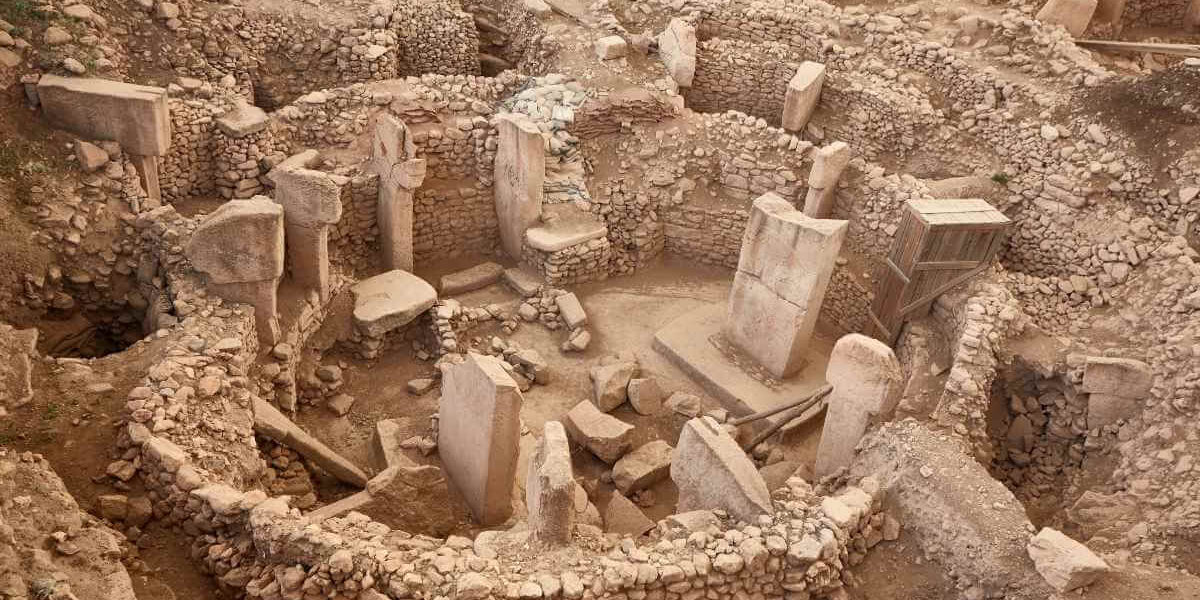Introduction
Situated on the sun-kissed hills of Southeastern Turkey, Göbekli Tepe stands as one of the most remarkable archaeological sites in the world, often regarded as the oldest temple complex known to humanity. This ancient treasure predates both Stonehenge and the Great Pyramids of Giza, providing invaluable insights into our understanding of early civilization. This guide delves into the captivating history, travel tips, and tours that will enrich any visit to this extraordinary site.
A Brief History of Göbekli Tepe
Discovery and Excavation
The site, translated as “Potbelly Hill,” was first discovered in 1963 during an archaeological survey led by Istanbul University and the University of Chicago. Despite its significant potential, it remained largely unnoticed until the late 1990s, when German archaeologist Klaus Schmidt emphasized its vital importance. The excavations have unveiled monumental T-shaped limestone pillars set in circular formations, with some pillars weighing up to 20 tons, demonstrating incredible craftsmanship.
Age and Significance
Radiocarbon dating estimates Göbekli Tepe’s construction to around 9,600 BCE, which makes it the earliest known temple site. The revelations brought about by this site suggest that social complexity and organized religion existed long before the advent of agriculture, challenging the traditional narrative of human development.
Theories and Mysteries
Many archaeologists believe that Göbekli Tepe served as a ceremonial hub for hunter-gatherer communities. The intricate carvings of animals, such as lions and snakes, possibly reflected spiritual or symbolic meanings. Yet, the true purpose of the site remains a conundrum, inspiring endless debates and numerous documentaries.
What to See at Göbekli Tepe
The Stone Circles
The most striking elements of Göbekli Tepe are its large T-shaped pillars, organized into circles that can span up to 20 meters in diameter. Each pillar features elaborate carvings, showcasing remarkable attention to detail.
Visitor Walkways
Modern walkways have been constructed around the site, granting visitors sweeping views of the excavation pits while protecting the delicate structures within.
Interpretive Center
The nearby museum displays artifacts unearthed during excavation, alongside interactive exhibitions that elucidate the historical significance of the site.
Best Time to Visit
Visitors can explore Göbekli Tepe throughout the year, but the spring (April to May) and autumn (September to October) seasons are particularly favorable due to their mild temperatures. Summers can reach scorching highs, while winters may be unexpectedly chilly.
How to Get There
The site is located approximately 15 km (9 miles) northeast of Şanlıurfa, a historic city known as Urfa. Various transportation options exist, including taxi services, which can make reaching the site hassle-free, especially for those keen on maximizing their travel experience. Utilizing platforms such as LocalsRide allows travelers to book personalized transfers that suit their preferences, ensuring a smooth journey.
Enjoying Your Visit
While exploring Göbekli Tepe, having a knowledgeable guide can greatly enhance your experience. Consider arranging a guided tour for insightful narrative and context. Not only does this make navigation easy, but it also provides a deeper appreciation of the site’s historical significance.
Conclusion
In summary, visiting Göbekli Tepe affords an unparalleled look into the dawn of human civilization. This archaeological marvel continues to captivate the hearts and minds of visitors and scholars alike. For those who wish to explore this ancient wonder without the hassle of logistics, LocalsRide.com offers a unique advantage by providing a range of vehicle options and informed services that cater to travelers’ needs. Experience the ease and convenience of personalized transport, ensuring you soak in every moment of your trip. Book your ride with LocalsRide.com today!

